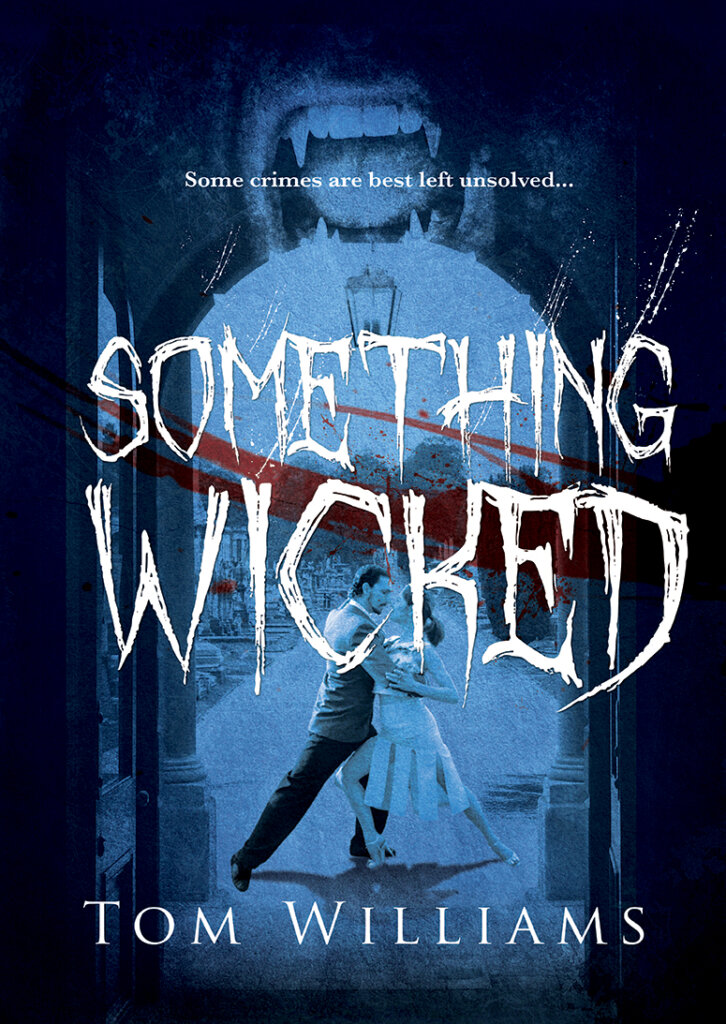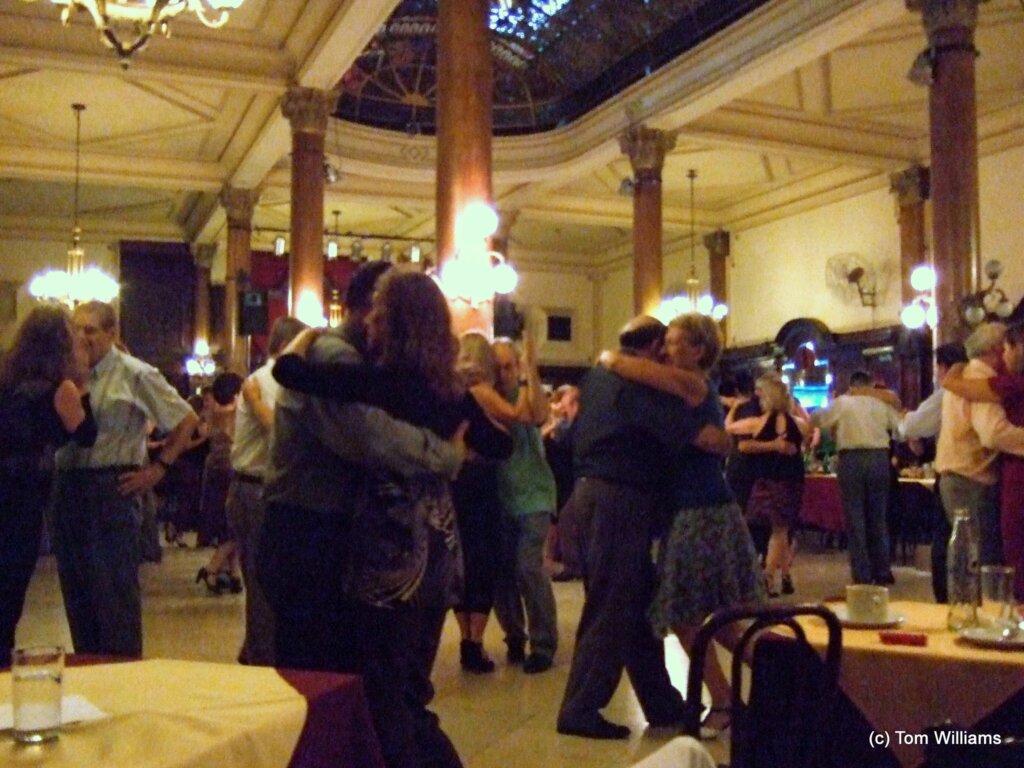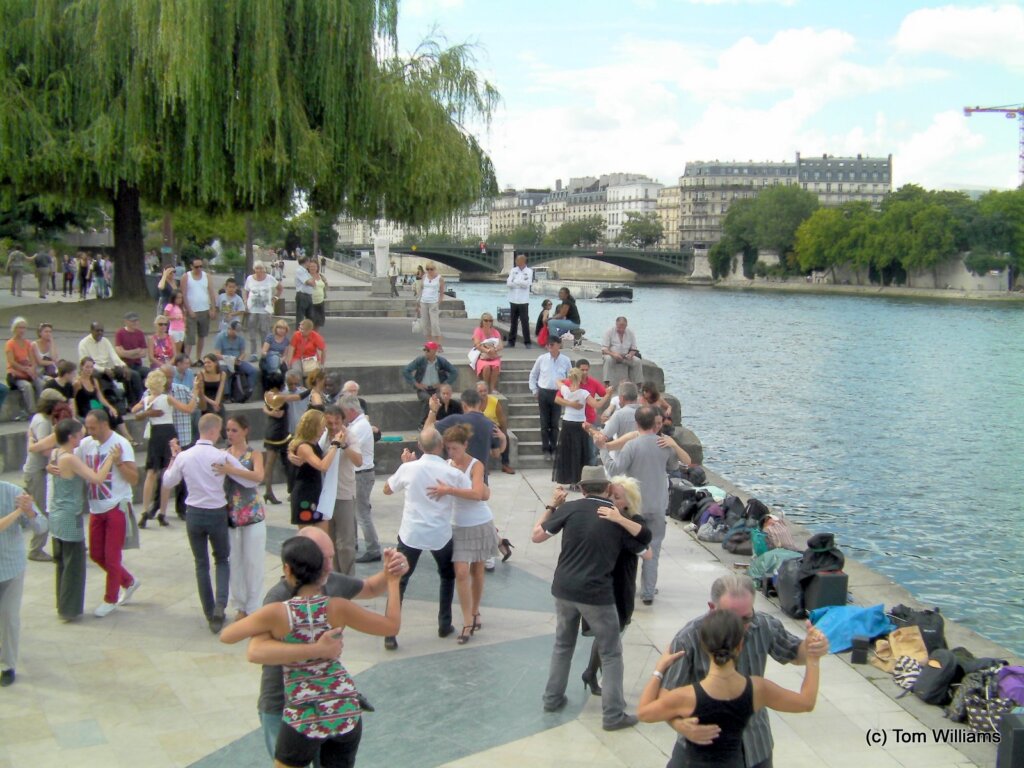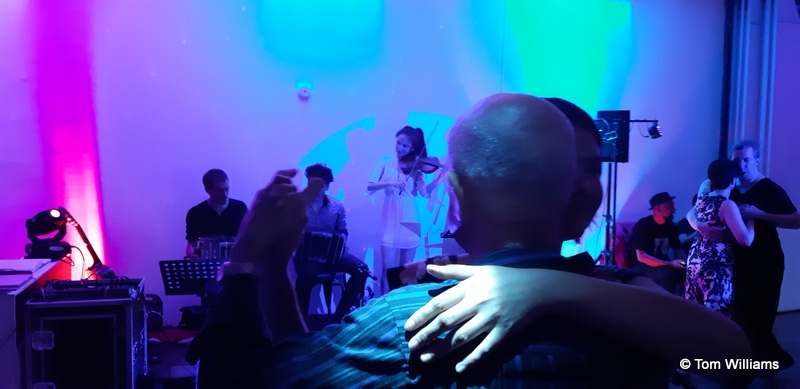A free short story for Christmas
I’m not a big short-story writer but once I got the idea for this one, I couldn’t let it go. It features Galbraith and Pole and is set soon after they first met in Something Wicked. You can enjoy it even if you haven’t read Something Wicked but I’m giving the book away free today and tomorrow (Wednesday) if you want to.
It’s in the early days of Galbraith and Pole’s friendship, as they are feeling their way. For Galbraith, the idea of friendship with a vampire is something he is not entirely comfortable with but Christmas brings them closer together.
It’s an unashamedly schmaltzy story because it’s Christmas. And it’s got tango in because Pole (like me) loves the dance and the music.
I hope you enjoy it.
Merry Christmas.
THE CHRISTMAS MIRACLE
The pawn shop had one of those old fashioned bells that rang when a customer opened the door. The owner shuffled out of the back.
“Can I help you?” He spoke automatically before he recognised his customer. “Oh, Mr Galbraith. What brings you in here?”
“Afternoon, Sam. I didn’t expect you to be overjoyed to see me, but you could sound a bit more welcoming than that. It’s nearly Christmas.”
“You make me nervous, Mr Galbraith. I won’t tell a lie. I’ve been straight since – well, since you last ran me in, but you turn up and I wonder what a Chief Inspector is doing bothering the likes of me.”
Galbraith wandered over to the nearest of the display cases. It was the usual stuff: watches, some cheap jewellery, a few high-end mobile phones. “Maybe I’m just doing a bit of shopping, Sam.”
Sam said nothing.
“Fair enough.” Galbraith turned his attention to a pile of old vinyl records sat on the table. “I was just wondering if you’d heard anything about computers. A few seem to have gone missing from warehouses lately.”
“Not my thing, computers. Difficult to put a price on. Somebody shows up with a smart laptop in its box and all and then it turns out that they’ve changed the processor thingy. Looks fine, switches on and everything, but it’s a piece of junk. Been caught that way a couple of times. You can’t trust anybody these days. Too many crooks about.”
“Any particular crooks in mind, Sam?” He was looking through the records. The covers spoke of the bands of his youth: Oasis, Stone Roses, Blur, the Chemical Brothers.
Sam sniffed. Galbraith was a big man, generally easy going but able to exude an indefinable air of menace when he wanted. It was a useful ability in a police officer.
“Might have heard something,” Sam said. “Word is that the Bingham brothers have been offering a few laptops around.”
“Have they indeed?” Galbraith worked his way to the bottom of the pile where a few 78s sat incongruously alongside the shiny covers of the late 20th century. One of them seemed to be Spanish. ‘Yo no sé qué me han hecho tus ojos.’ Galbraith slipped it out of its paper sleeve. ‘Odeon Bs As’ it said on the label.
“That’s very helpful, Sam.” He was careful not to sound as if it was particularly useful, though he reckoned it was just the lead he had been looking for. He felt, in the circumstances, it would be only polite to buy something. He held up the disc. “What do you want for this?”
Sam sniffed. “Call it fifty quid,” he said.
“Call it twenty.”
“If I sell it you for that, will you bugger off and leave me alone?”
Galbraith took £50 from his wallet. “And miss the pleasure of your company,” he said.
The bell tinged behind him as he left.
* * *
It was the first Christmas after he had met Chief Inspector Pole. He had wondered if it would be appropriate to offer his new colleague a Christmas present. Did vampires even celebrate Christmas?
He decided that finding the record was a sign that a gift would be well received. An old record from Buenos Aires was likely to appeal to Pole, with his fascination with tango. Galbraith decided to wrap it up and take it with him the next evening when he was due to visit Pole and enjoy the Other’s taste in whisky.
Pole’s apartment was, as ever, a quiet retreat from the world. There was no sign that they were barely a fortnight off Christmas: no tree, no cards. Galbraith wondered if his garishly wrapped gift – all cartoon Santas and reindeer – had been misjudged, but Pole seemed delighted with the idea.
“I don’t think anybody has ever give me a Christmas gift before. I’m not entirely sure of the etiquette. Do I open it now or wait until the 25th?”
In the absence of any sign that Christmas Day was to be marked in any way in Pole’s home, Galbraith saw no reason for not opening the gift immediately.
Pole smiled, apparently delighted with the idea of opening his present. First, though, he set it carefully on the desk in the corner of the room, opened a drawer and took out what seemed to Galbraith a wicked looking dagger. Noticing his glance, Pole explained. “It’s an Italian stiletto. I took it from an assassin who was quite anxious not to see James II flee the country. I use it as a paper knife. It’s too pretty to throw away.”
It was pretty, though the narrow blade meant it was far from an ideal paper knife. Still, Galbraith thought, it was better that Pole use it for opening parcels than that he decided to stab people with it. There was obviously a story behind Pole’s acquisition of the blade but Galbraith refused to give him the satisfaction of asking about it.
Pole put the wrapping paper neatly aside and examined the record.
“Where on earth did you find this? It’s an original Gardel recording from 1931.”
He poured Galbraith another whisky and, telling him to wait, he hurried from the room, returning with an old wind-up record player complete with a huge horn to amplify the music. “No electronics to get in the way of the sound,” he proudly informed Galbraith.
It had never occurred to Galbraith that Pole might actually play the record but, after he had wound the machine up and lovingly wiped over the surface of the disc, they sat and listened to the crackly sound of the voice of the legendary Carlos Gardel.
“Can’t you feel him, reaching out to us across a hundred years?”
It was a tango tune in waltz time. “Canaro dedicated it to his lover, Ada Falcón. He writes about her eyes and the love he sees in them.”
Galbraith enjoyed listening to Pole talk about tango, although he had to admit that he did not share the true aficionado’s enthusiasm for these scratchy old recordings. He was just happy to see how much pleasure his gift had given to his friend.
They listened to the record several more times and drank a few more glasses of Scotch before Galbraith set off home, his friend’s thanks still ringing in his ears.
* * *
It was a while before Pole was in touch again. He rang Galbraith in his office at Kensington police station – the way he usually chose to get in touch.
“I just wanted to thank you again for the record. I was very touched.”
Galbraith made the usual polite noises of an Englishman uncertain how to respond to effusive gratitude.
“I’ve been trying to think of something I could offer in return.”
Galbraith made more polite noises. The words “no need” and “my pleasure” were in there somewhere but Pole simply ignored him.
“People do say that the best gifts are experiences. I thought I could offer you an experience that reflects the spirit of the season. Do you think you could call over in the evening the day after tomorrow? And bring your car? I thought we might take a run out into the country.”
The day after tomorrow, Galbraith realised, was Christmas Eve. It seemed an odd day to be calling on his friend but, when he came to think about it, it wasn’t as if he had any other plans. Christmas, for Galbraith, was a solitary celebration and the idea of seeing Pole on Christmas Eve appealed. So, two days later, he arrived in Chelsea to find Pole already dressed in coat and hat.
“We’d best be starting. We’ve a little way to go.”
Pole directed him west. Galbraith suggested that he put their destination into the sat nav but Pole insisted instead that they rely on his road atlas.
Pole opened the large hard-backed book he had been holding under his arm. Galbraith could not remember when he had last seen an old fashioned road atlas. He was surprised they still made them and he could only hope that this one was up-to-date enough to get them to their destination.
They headed out of town along the Great West Road. After a while, it seemed clear to Galbraith that it would have been more sensible for them to take the M4 but, when he suggested this to Pole, he said that he had been using the Great West Road since the main traffic had been stagecoaches and that by now he preferred the route.
A few miles short of Reading, they left the main road and headed south. Although they were less than an hour from London, they seem to be deep in the countryside and Galbraith struggled to navigate the tiny unlit roads.
“Pull off here.”
They were in a paved yard. Galbraith could just make out a house in the darkness.
“It’s owned by a colleague,” said Pole.
“One of the Others.”
“Indeed.”
“I thought you were more town dwellers.”
“We generally are. But Simon has decided to live in the country. He says the isolation means he is less exposed to temptation.”
Galbraith said nothing. He knew that part of Pole’s job was to discourage the Others from indulging in their natural appetite for blood. Some, Pole had explained, found it easier than others.
“He’s not at home. He likes to wander the countryside at night. But he’s happy for us to be here.”
Pole led the way along a track that ran from the yard past the side of the house and into a field beyond.
In the distance was what looked like a shed just visible against the starry sky.
“It’s a stable,” said Pole. “Simon is by way of being a hobby farmer. He says he finds the animals restful.”
In the darkness, Galbraith heard the clucking of chickens beside the path.
“Odd sort of farmer who leaves his birds out at night. He must lose a lot to foxes.”
Pole chuckled. “It would be a very brave fox that took chickens on this land.” He pointed towards the stable. “Such a lovely night. Look at that star.”
There was one star, low in the sky, brighter, it seemed than the others.
“It seems appropriate, doesn’t it? Following the star towards the stable.”
Galbraith could not remember when he was last out of the city on a clear night. He was astonished by the number of stars he could see. There was a quarter moon too. Even without his friend’s night vision, Galbraith had no problem in keeping to the path.
“And here we are.”
Pole opened the door and reached inside for a light switch.
Galbraith could hardly believe what he was looking at. Inside a bull – a big bull with a ring in its nose, looking for all the world like an illustration in a children’s storybook – stood alongside a donkey. Half a dozen sheep were curled up beside them on the straw.
“As I said, he’s a hobby farmer. There’s no sense to it, but Simon enjoys the look of the place, especially at this time of year.”
It did, Galbraith admitted to himself, look amazing: a sort of recreation of the traditional first Christmas. He found himself looking around, searching for a baby in a manger.
“It’s certainly a different way to see in Christmas.”
Pole smiled. “But there is more. Do you know the legend of Christmas?”
Galbraith looked puzzled and Pole explained. “The legend says that at midnight on Christmas Eve, the ox and the ass are given the power of speech.”
Galbraith vaguely remembered the story from his childhood but surely Pole had not brought him here because he believed it.
“You shouldn’t dismiss these legends out of hand. After all, I’m sure you didn’t believe the stories of immortal creatures that feast on blood until you met them.”
Galbraith admitted that was true, but the story of the animals talking seemed even more implausible.
“Why not listen and see what happens?”
Why not? It was pleasant in the stable, warm with the body heat of the animals and peaceful in the quiet of the winter night. Galbraith stood quietly listening but, apart from the shuffling of the donkey and the occasional sleepy bleat of a sheep, he heard nothing.
After a while there was a sound, but it came from outside the stable. Somewhere in the distance, church bells were ringing in Christmas Day.
“Did you hear anything?” Pole’s voice was deep, calm, reassuring. It was what Galbraith thought of as Pole’s ‘hypnotism’ voice, though Pole always denied that he hypnotised anybody. If he was trying to hypnotise Galbraith, it wasn’t succeeding. The animals remained obstinately dumb.
“Nothing,” said Galbraith. “Perhaps the Others are more sensitive than we Mortals.”
“Perhaps,” agreed Pole. “After all, we have been honing our skills for a few hundred years.” He turned towards the door. “I’m sorry it was a wasted trip.”
“Hardly wasted,” said Galbraith. “There’s something magical about a scene like this on Christmas Eve.”
Pole glanced back over his shoulder and smiled. “Magical. Yes, I think there is.”
He opened the door and, as he did so, Galbraith could have sworn that somebody in the stable wished him a Merry Christmas. “And a happy new year.”
There was something odd about the voice. Something not quite human.
Galbraith turned away from the door and looked back again towards the animals. The donkey and the bull stood placidly. There was no sign that either of them had spoken. The sheep twitched in their sleep.
He had imagined it. That or Pole was somehow playing games with his mind again.
The bull raised its head and looked at him. Its eye was like a deep brown pool, strangely gentle in that huge head. It seemed somehow very wise.
“We’d best he on our way,” said Pole.
Galbraith did not move. He was staring at the bull. It had long, soft eyelashes and he watched as its eyelid drooped.
He could have sworn that the creature was winking at him.
Pole turned off the light and they started back towards the car. Behind him Galbraith heard a soft laugh that was almost, but not quite, human.
“Merry Christmas,” said Pole.

Something Wicked
Chief Inspector Galbraith thinks he understands murder. But when he finds himself working with a vampire, there is more at stake than catching one killer. Can the case be solved before a 500 year truce breaks down?






